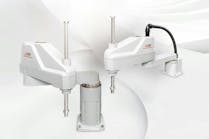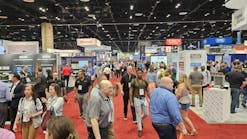Large Fans Increase Thermal Comfort, Reduce Energy Costs for University
New Orleans is known for its old-world charm. In terms of HVAC, however, that can mean antiquated cooling systems that are no match for the city's sweltering heat and high humidity.
In remodeling and expanding the Lavin-Bernick Center for University Life (LBC) on its Uptown campus, Tulane University forewent the installation of a traditional HVAC system, opting instead for passive cooling techniques — most noticeably, three 10-ft-diameter fans from Big Ass Fans — to keep the building's 10,000 daily visitors comfortable.
“Big Ass Fans are a unique addition that adds to the ambience and comfort of the building,” Leland Bennet, director of the LBC, said.
Unlike a small high-velocity fan that creates small turbulent air streams that dissipate quickly, a large slow-moving fan entrains a significant amount of air. The air approaches the floor in a conical column that radiates in all directions. The air flows horizontally until it reaches a wall or airflow from another fan, at which point it turns upward and flows back toward the fan. This creates convection-like air currents that gather inertia as the fan continues to spin. The increased air circulation improves heat loss by removing hot, humid air and replacing it with relatively dry air. The result is a silent, non-disruptive distribution of 3- to 5-mph breezes over large spaces.
Because of their size, high-volume/low-speed fans are effective and efficient. Using ¾- to 2-hp motors, they consume power at a fraction of the cost that small ceiling fans do.
Relying on size, rather than speed, the fans from Big Ass Fans effectively circulate air throughout the mezzanine of the LBC, replacing 16 inefficient ceiling fans. During winter, the fans are slowed to redistribute warm air collecting at ceiling level down to occupancy level. With the rule of thumb of a 3-percent reduction in energy costs for every degree by which a thermostat is turned back, many customers accrue savings of 25 percent or more during heating season.
More than 100 universities nationwide have installed fans from Big Ass Fans, which can help earn credits in seven categories of the U.S. Green Building Council's Leadership in Energy and Environmental Design (LEED) Green Building Rating System.
In 2008, the LBC project was named an American Institute of Architects Committee on the Environment Top Ten Green Project.
Information and photographs courtesy of Big Ass Fans.
Circle 103
For Design Solutions author guidelines, call Scott Arnold, executive editor, at 216-931-9980, or write to him at [email protected].








